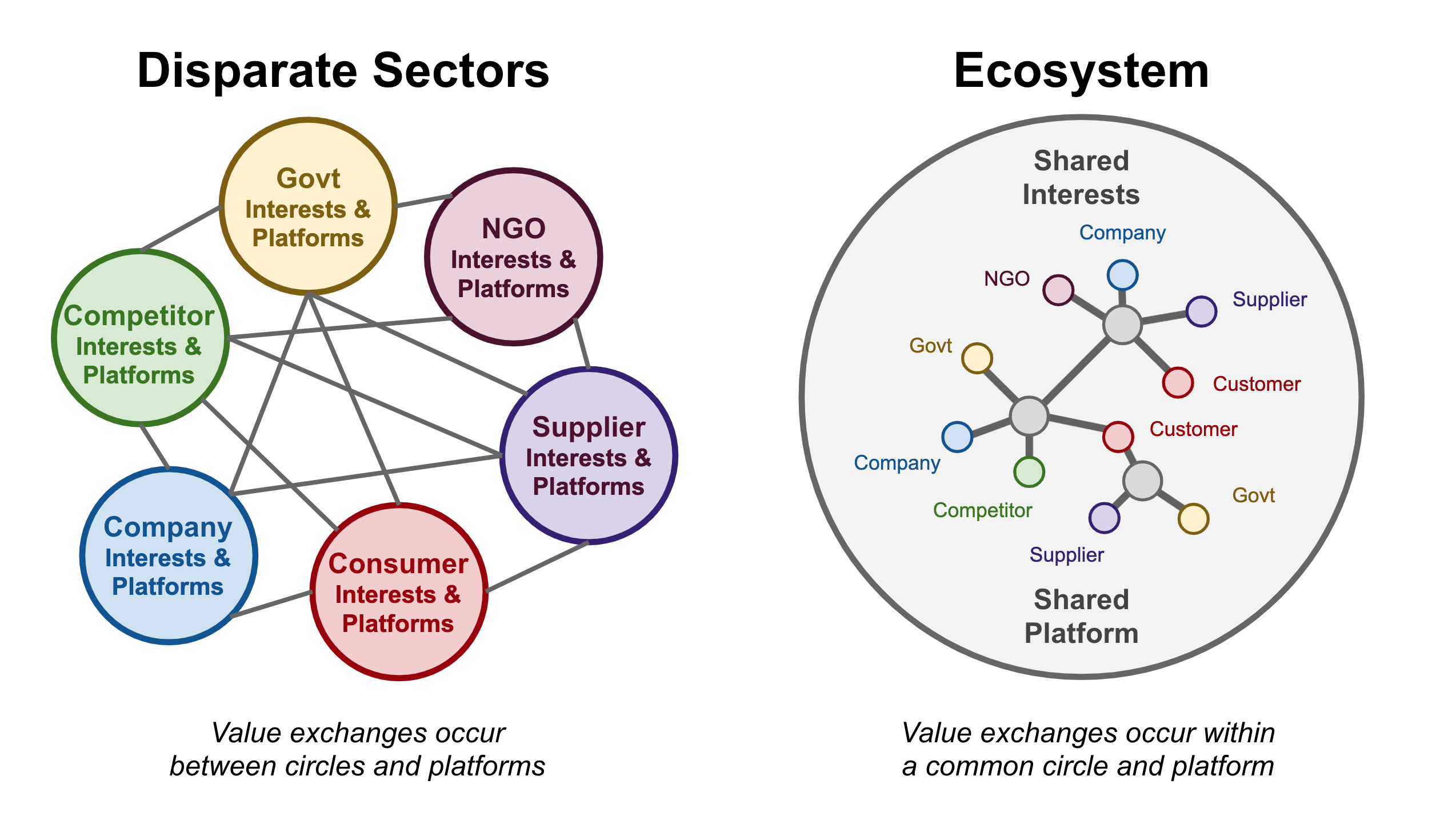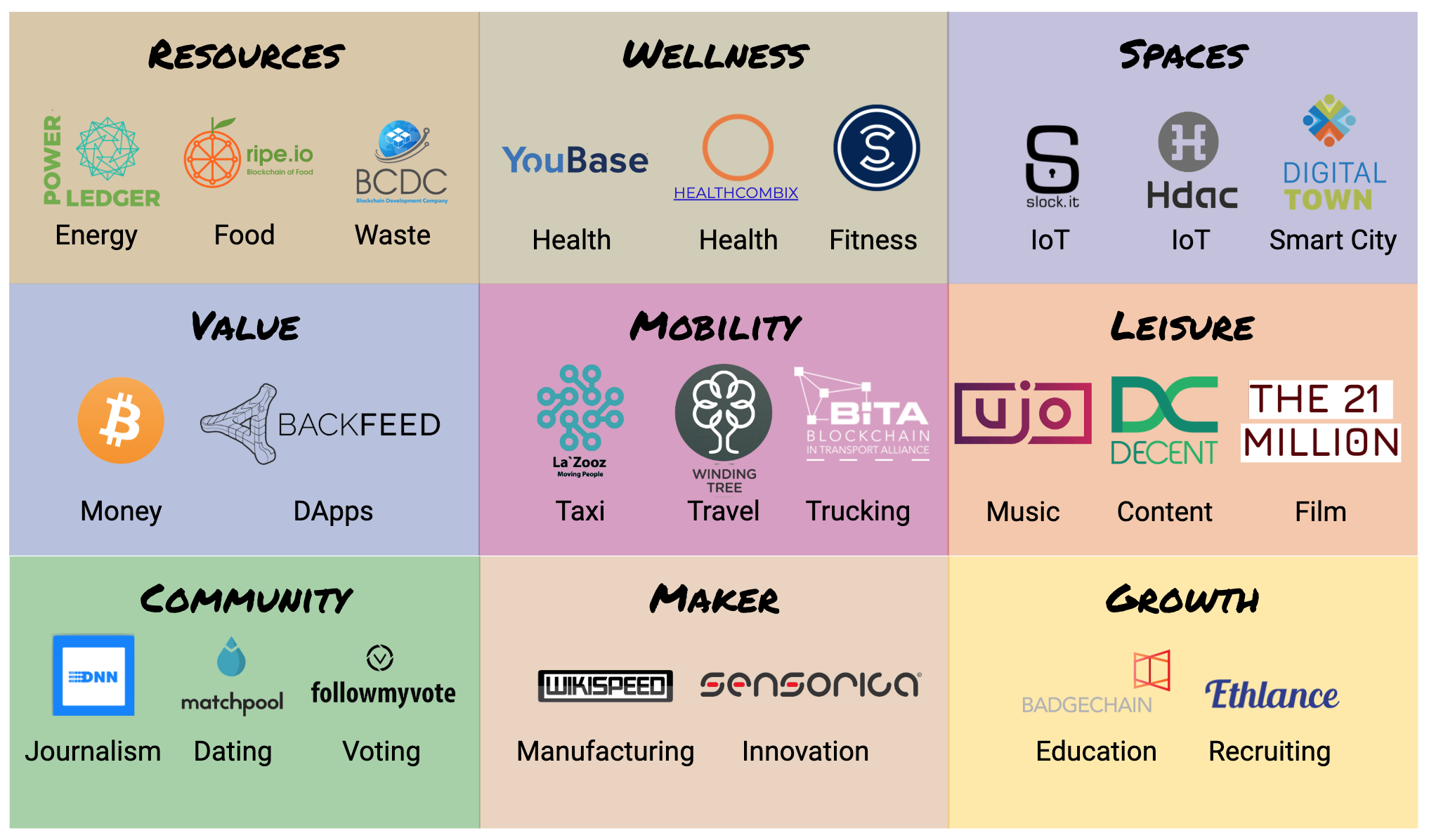We’re living in an amazing time. Gene editing, super-intelligent robots, ending aging, autonomous vehicles and colonizing Mars. Never have there been so many dramatic changes emerging to impact every dimension of our lives. Executive Chairman of the World Economic Forum, Klaus Schwab, notes that these changes are the result of the simultaneous emergence of multiple world changing technologies that he refers to as the fourth industrial revolution. These technologies are spawning new platform ecosystems that challenge mindsets, organizational constructs and business models. These ecosystems represent great promise in that they could connect billions more people digitally, stimulate new collaborative value creation and even solve the world’s grandest challenges. Or they could cause great peril, accelerate inequality and further fragment societies, if our economic systems distribute that new value unevenly. While technologies such as AI and IoT are creating new value by automating and connecting things, other emerging technologies such as blockchain are fundamentally transforming the way that value is exchanged and distributed. Writing for the World Economic Forum, Don Tapscott describes the impact of blockchain:
“The internet is entering a second era that’s based on blockchain. The last few decades brought us the internet of information. We are now witnessing the rise of the internet of value. Where the first era was sparked by a convergence of computing and communications technologies, this second era will be powered by a clever combination of cryptography, mathematics, software engineering and behavioural economics. [ ] Like the internet before it, blockchain promises to upend business models and disrupt industries. It is pushing us to challenge how we have structured society, defined value and rewarded participation.”
Indeed, blockchain challenges the structure of society because it makes it possible to broaden cooperation in ways that not only dramatically accelerate innovation and improve efficiency, but also create new economically inclusive markets. Blockchain’s unique distributed architecture makes it possible to dissolve boundaries within and between the private, public and civil sectors and transition society toward a new collaborative world of ecosystems.
Think Of An Ecosystem As A Circle of Shared Interest
So, what is this new collaborative world of ecosystems and how should one approach the opportunity and threat it represents? It turns out that how one approaches ecosystems depends largely on one’s mindset and interests. Let us explain. We could formally define an ecosystem as “the entities collaborating along a continuum of customer needs to expand addressable market and deliver greater value”, but that definition masks what’s most fundamental about ecosystems. A simpler way to define an ecosystem is to imagine drawing a circle around the individuals, organizations and things that share or complement your interests. Why you draw your circle and how big you draw it depends largely on your mindset. You might be of the mindset to improve collaboration across your business units, create efficiencies within your supply chain or create a new market to address non-consumption. Perhaps, you’re interested in leveraging the network effects of open source development to solve complex problems or keep up with the exponential pace of innovation. Maybe, you want to align your business with emerging consumer preferences by creating sustainable processes and products or by being more economically inclusive. All of these interests involve interactions within and across organizations, industries or multiple sectors of the economy. Yet, how we define “our circles” influences how effectively we interact to create value. The diagram below illustrates how expanding your circle around common interests and dissolving boundaries through a shared platform like blockchain can create new opportunities for efficiency, innovation and value creation.
Multiple Kinds Of Ecosystems Are Emerging
There are many kinds of ecosystems emerging within and across the private, public and civil sectors of the economy. The image below illustrates the emergence of the most prominent interest-driven ecosystems as well as the Ecosystem of You, a new market that embeds the interests of the private, public and civil sectors into experiences that are purposeful, profitable and economically inclusive.
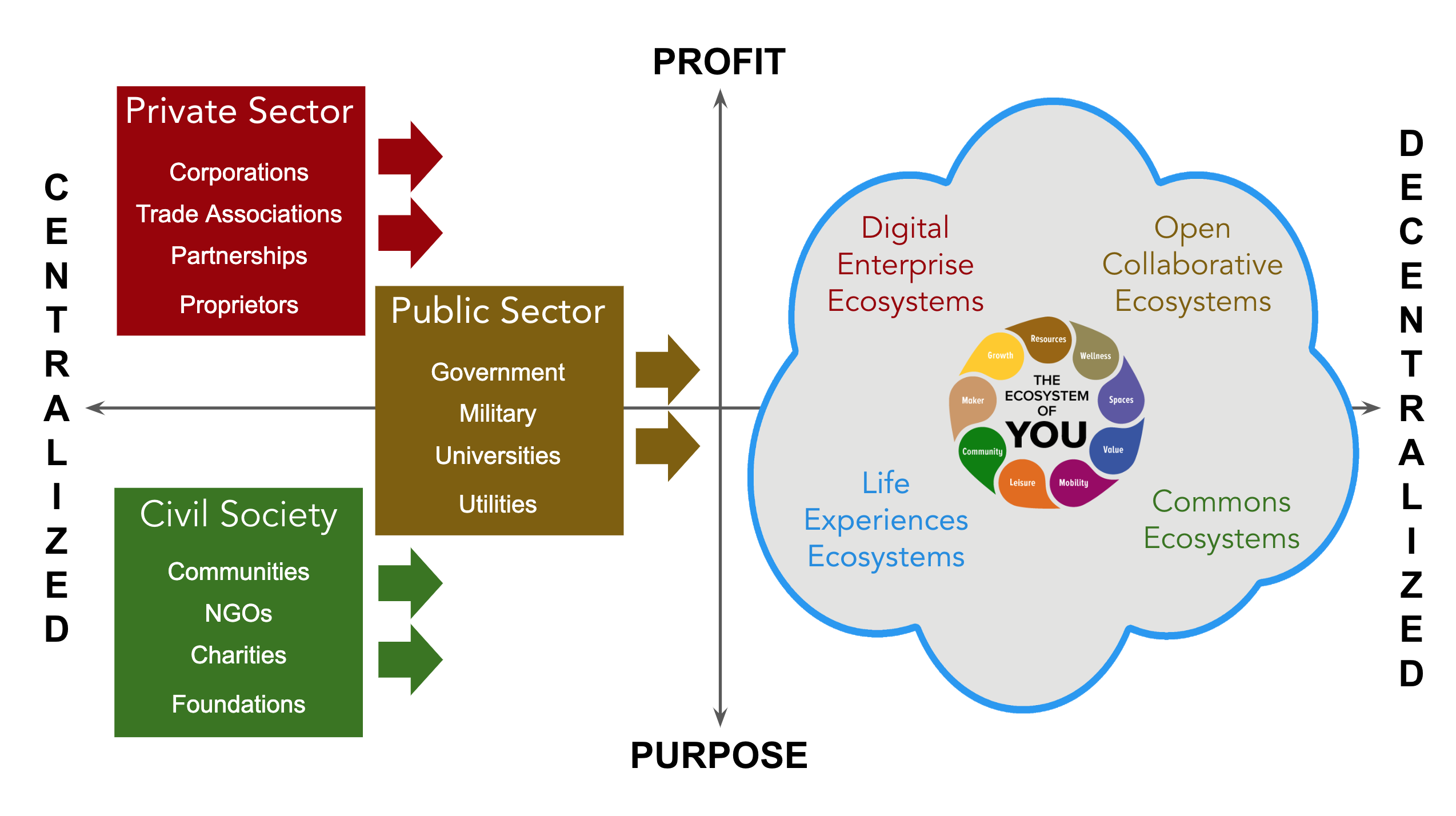 We describe the following ecosystems with related examples below.
We describe the following ecosystems with related examples below.
- Digital Enterprise Ecosystems
- Open Collaborative Ecosystems
- Commons Ecosystems
- Life Experience Ecosystems
- Ecosystem Of You
Digital Enterprise Ecosystems
A digital enterprise ecosystem has its roots in the private sector and is comprised primarily of corporations with a common interest in achieving multi-party efficiencies to gain price, quality or speed to market advantages over competitors. Providers create network effects by curating a platform-based ecosystem that becomes the industry standard for hyperproductive consumption. Examples of digital enterprise ecosystems include:
Intra-organization Ecosystems represent a move away from traditional corporate hierarchical structures that struggle to manage communication and information as organizations grow. Intra-organization ecosystems move toward frameworks such as Holacracy, Agile, Sociocracy 3.0 and Collaborative Network Economies, which seek to turn large companies into networks of autonomous company-like teams.
Industry Platform Ecosystems decentralize innovation as providers create platforms upon which others innovate. Examples includes the Apple and Google mobile device ecosystems, Amazon Alexa virtual assistant ecosystem, and the Banking ecosystem R3.
Prosumer Ecosystems decentralize production by enabling consumers to become producers or “prosumers” that create products and services and exchange them directly with their peers. Platform providers like Uber, Youtube and AirBnB monetize exchanges via subscriptions, transaction fees or advertising and dictate terms to both the demand and supply side of the exchange.
Supply Chain Ecosystems utilize decentralized platforms like Viant to improve transparency, tracking and efficiency among manufacturers, suppliers, distributors, service providers and customers in complex global supply chains.
Multi-industry Ecosystems power customer experiences that transcend corporate and industry borders. For example, an ecosystem of vehicle manufacturers, prosumers, energy, real estate and retail providers can coordinate their offerings to create a convenient consumer experience for Electric Vehicle Charging.
Open Collaborative Ecosystems
Open collaborative ecosystems decentralize governance and ownership in a model that disrupts and disintermediates digital enterprise ecosystem platform providers. In an open collaborative ecosystem, prosumers own the platform and govern all decisions and terms of exchange, including income distribution. There are thousands of examples of Blockchain open collaborative ecosystems emerging across nearly every aspect of the economy as exemplified in the graphic below.
Commons Ecosystems
Whereas open collaborative ecosystems represent egalitarian alternatives to digital enterprise ecosystems, commons ecosystems focus on sustaining ongoing access to and health of the shared resources upon which we all depend. There are many types of commons, including:
Ecological Commons (ie – air, water bodies, wetlands, landfills)
Civic Commons (ie – public spaces, public schools, public transit)
Social Commons (ie – caring for the sick, elderly & children; housework)
Cultural Commons (ie – literature, music, arts, design, film, video, television, radio)
Knowledge Commons (ie – intellectual information and content)
Examples of commons ecosystems include open source software like Bitcoin and Ethereum, Guardium, a platform for distributed emergency response, and social plastic, a platform to incent recycling.
Life Experience Ecosystems
As platform models continue to proliferate, the world will increasingly be comprised of interoperable ecosystems where every organization, individual and thing are integrated. In that world, there will be a great opportunity to create connected life experiences. Not connected in the way you might think, however. Not a physical IoT or virtual assistant connected kind of way. In the EV charging example, everything is integrated so that the experience is convenient and has great utility, but charging your vehicle conveniently isn’t going to change your life. The kind of connected life experiences we’re referring to connect people and create bonds in fundamentally human ways around purpose and passion. Life experience ecosystems recognize that our industries don’t produce experiences that emulate how our lives occur or adequately address what’s most meaningful about the human experience. Take tourism, for example. There’s great opportunity in the travel and hospitality industry to drive more integration within and between the travel and hospitality segments to make the basics of tourism more convenient. Yet, that’s not why people travel. How you get somewhere or where you sleep once you’re there isn’t what people care most about when they’re vacationing. Increasingly people want to connect with others who share their interests and experience the places they visit in unique, authentic ways. We refer to this move away from tourist attractions to human connections as UnTourism and there’s an enormous underserved market to orchestrate similar meaningful experiences where people connect with each other on the basis of interests and values.
The Ecosystem of You
The ultimate opportunity in a hyper-connected world is to create an ecosystem of ecosystems that draws upon the interests of digital enterprise, open collaborative, commons and life experience ecosystems to create life experiences that meet everyone’s needs, from basic needs like energy, food and water to more complex needs like community, creative expression or reaching one’s potential. What if life experiences were enabled by a combination of private, public and civil sector providers whose efforts were orchestrated in the context of your life? What might that look like?
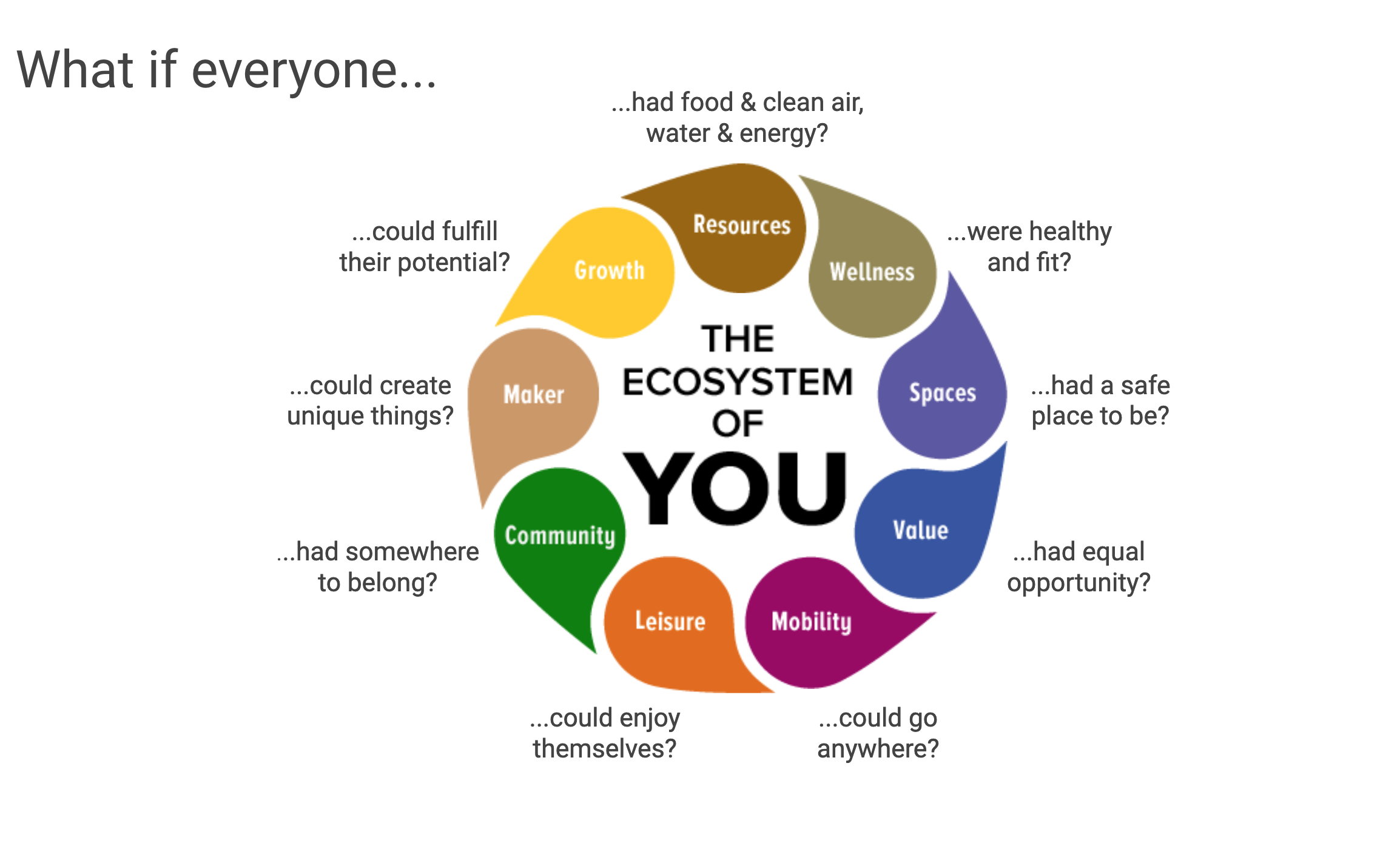 The Ecosystem of You model above depicts nine dimensions of our lives, each based on a fundamental human need, that collectively represent a unified structure for delivering life experiences. As the industries of today transition toward hyper-connected ecosystems, there is great opportunity to shift our perspective from “independently providing services to customers” to “collaborating to enrich human lives.”
The Ecosystem of You model above depicts nine dimensions of our lives, each based on a fundamental human need, that collectively represent a unified structure for delivering life experiences. As the industries of today transition toward hyper-connected ecosystems, there is great opportunity to shift our perspective from “independently providing services to customers” to “collaborating to enrich human lives.”
Keeping Pace With Exponential Ecosystem Innovation
Given the multitude of ecosystems emerging, how should one approach innovating with them? Innovation S curves have traditionally been a good model for managing innovation and timing investments in new technologies and business models. With S curves, which measure the speed and adoption of an innovation, the typical challenge has been timing when to jump from the first curve to the second curve. Traditionally, there has been a distinct period of time where the legacy technology is maturing and the new technology is emerging. However, the pace of ecosystem emergence, which is heavily influenced by open source blockchain innovation, is accelerating exponentially and causing S curves to compact and overlap as multiple ecosystems form simultaneously. The image below illustrates this dynamic.
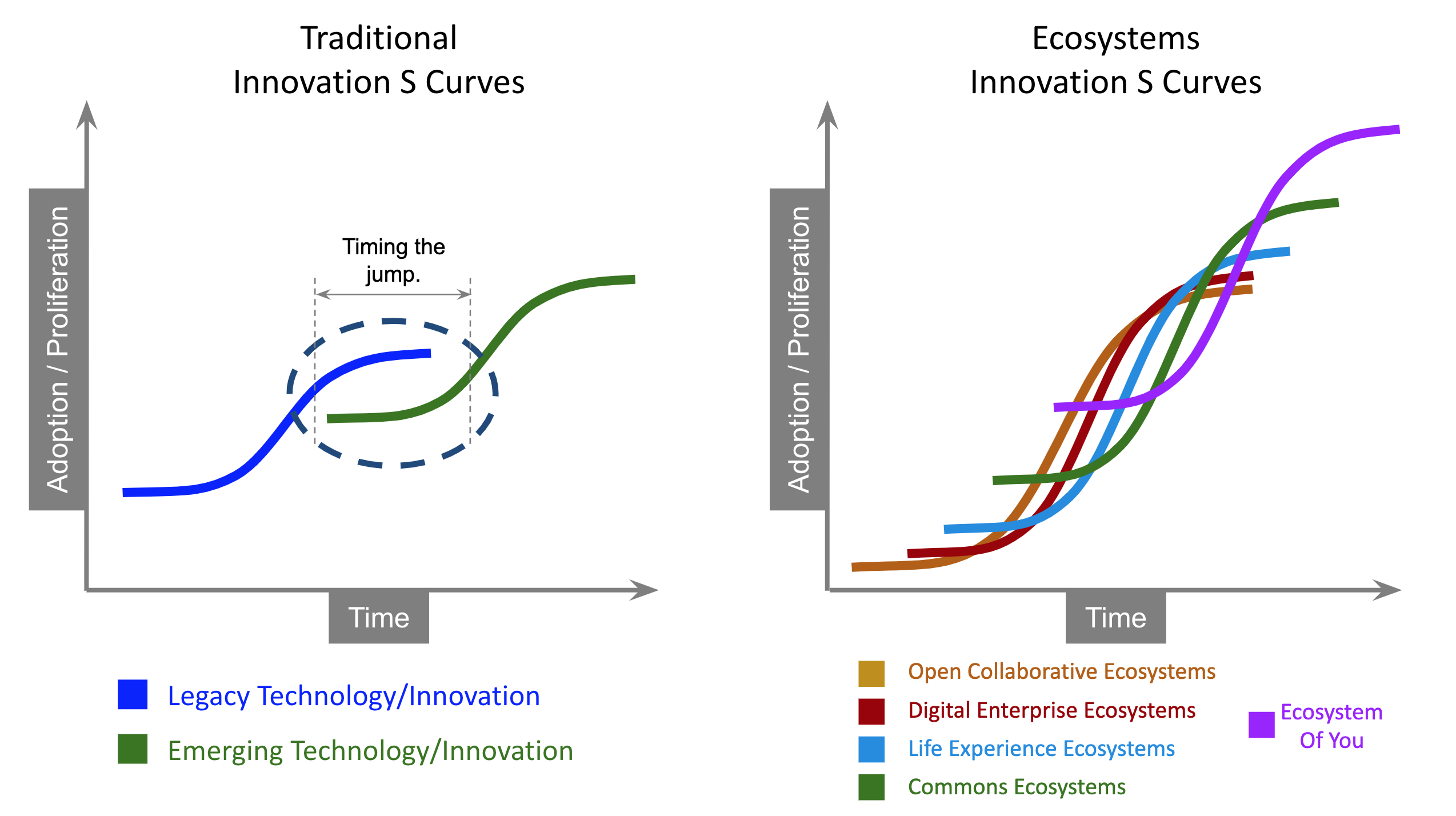 Given this dynamic, the only approach to navigate the uncertainty that the new world of ecosystems represents is to ride multiple curves simultaneously, experimenting along the spectrum of models in a way that creates value in current industry structures while exploring the emergence of new life experience markets.
Given this dynamic, the only approach to navigate the uncertainty that the new world of ecosystems represents is to ride multiple curves simultaneously, experimenting along the spectrum of models in a way that creates value in current industry structures while exploring the emergence of new life experience markets.

